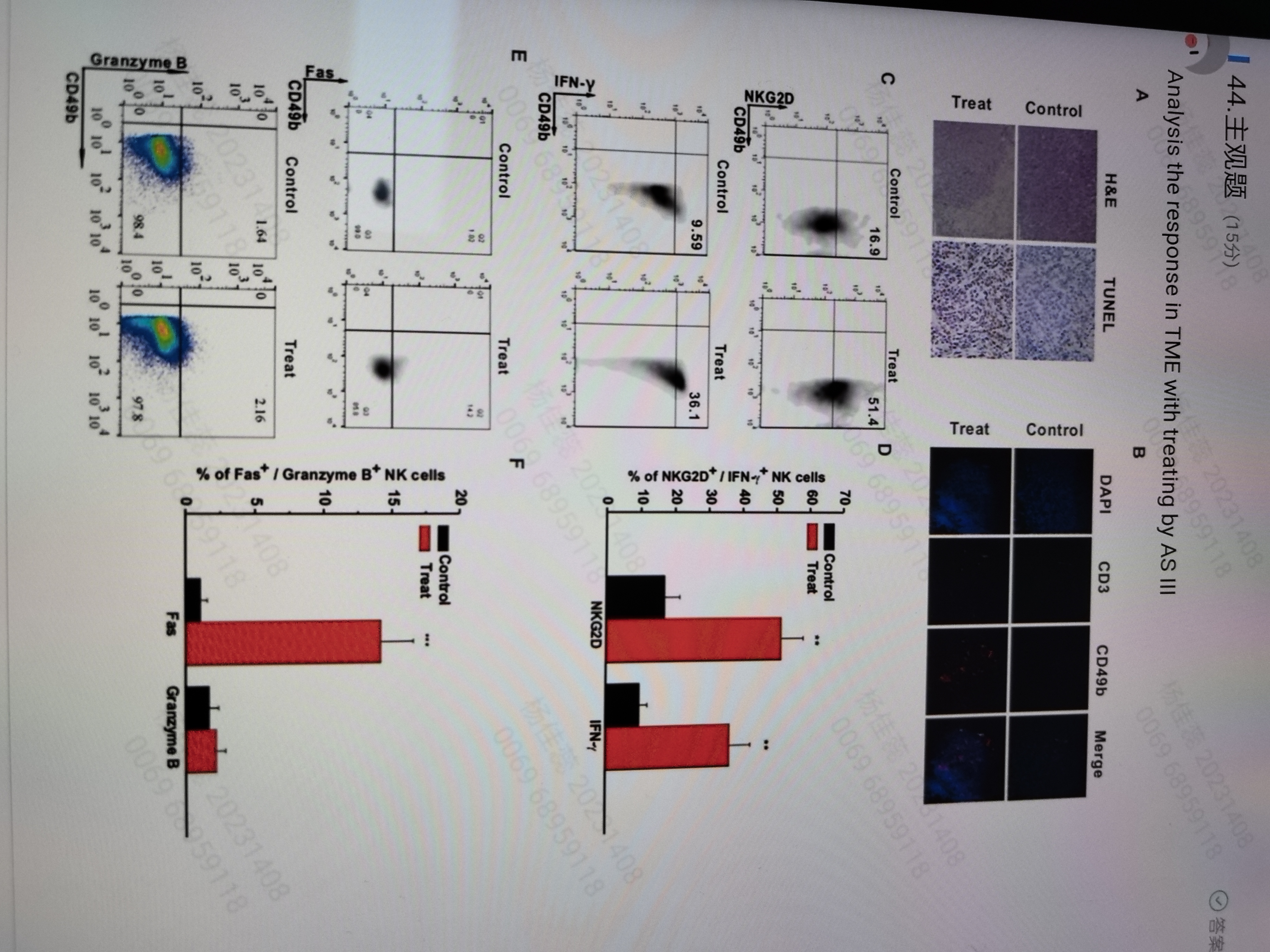Analyze the response in TME with treating by AS III.

Understand the Problem
The question is asking for analysis related to responses in tumor microenvironments (TME) after treatment with AS III, focusing on various markers and their expressions in NK cells.
Answer
AS III treatment enhances NK cell activity in TME.
The analysis shows that treatment with AS III increases the percentage of Fas extsuperscript{+} and Granzyme B extsuperscript{+} NK cells, as indicated in the bar graphs. Additionally, there is enhanced expression of IFN-γ and NKG2D extsuperscript{+} NK cells, suggesting an improved immune response in the tumor microenvironment (TME). Histological analysis shows differences between treated and control groups.
Answer for screen readers
The analysis shows that treatment with AS III increases the percentage of Fas extsuperscript{+} and Granzyme B extsuperscript{+} NK cells, as indicated in the bar graphs. Additionally, there is enhanced expression of IFN-γ and NKG2D extsuperscript{+} NK cells, suggesting an improved immune response in the tumor microenvironment (TME). Histological analysis shows differences between treated and control groups.
More Information
AS III appears to boost immune response by increasing cytotoxic NK cell activity, which is vital for tumor suppression. This is seen through markers like Granzyme B and Fas, indicating enhanced NK cell-mediated cytotoxicity.
Tips
Ensure accurate interpretation of flow cytometry and immunohistochemistry results. Mislabeling axes or misunderstanding comparative results are common errors.
AI-generated content may contain errors. Please verify critical information